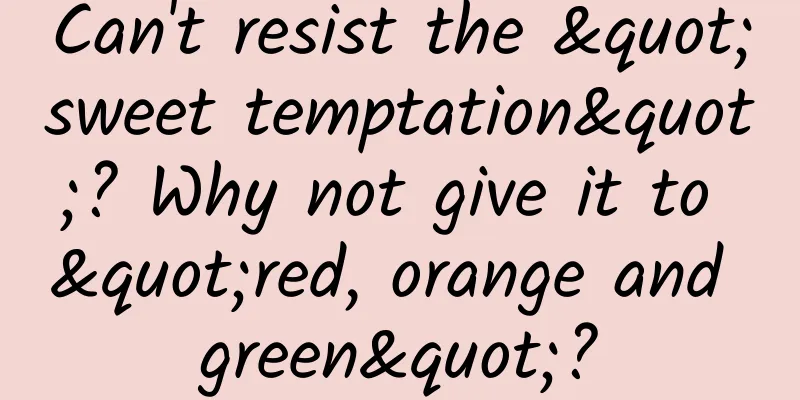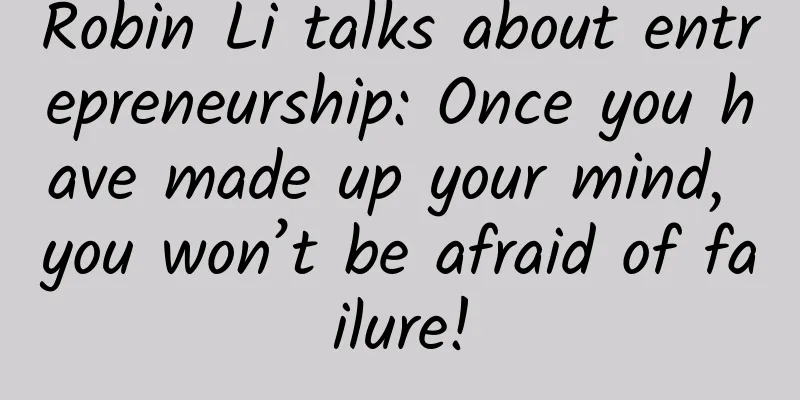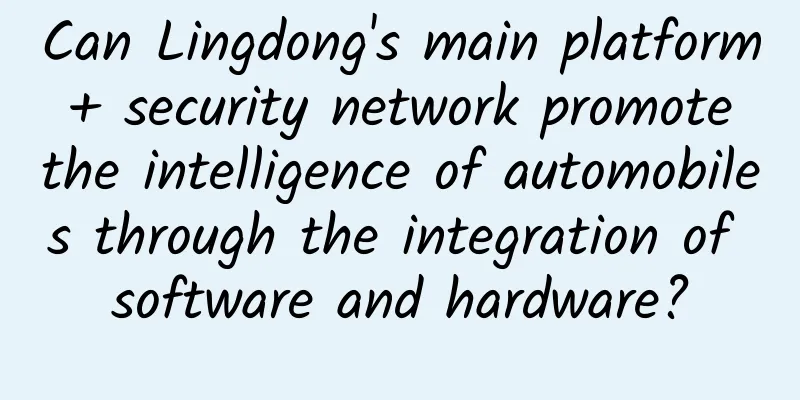Can't resist the "sweet temptation"? Why not give it to "red, orange and green"?

|
This is the 4582nd article of Da Yi Xiao Hu News Review Recently, many citizens have discovered that some supermarkets and convenience stores have added a touch of bright colors. It turns out that the "red, orange, and green" health warning signs for sugary drinks are hung in the beverage area. This is the sugary drink survey project recently launched by the Shanghai Center for Disease Control and Prevention in the city, and a total of 159 stores were selected as pilots. The purpose is to remind consumers to buy sugary drinks reasonably through simple, easy-to-understand and clearly visible signs, increase their awareness of its harm, and gradually develop good eating habits. (Pictures from the Internet) Brief History and Culture When it comes to beverages, I have a lot of thoughts. It has a long history, dating back to ancient times, when people naturally fermented it into juice and tea to quench their thirst and cool down. For example, during the Qin and Han dynasties, in addition to a variety of wines and teas, there was also a popular drink at the time, namely "honey water", which was a sweet and delicious drink made by adding honey to water and dissolving and mixing it evenly. Grapefruit tea and osmanthus syrup appeared in the Song Dynasty. The familiar lemon juice appeared in the Yuan Dynasty. When the Mongols went westward, they drank a kind of water in Central Asia called "Limu thirsty water". They fell in love with this sour and sweet taste and brought it back to the Central Plains. This water was very popular in the court at the time and became Kublai Khan's favorite drink. There was also iced sour plum soup in the Qing Dynasty. By 1886, in the United States across the ocean, a beverage developed rapidly. With the development of the capitalist global market, it came to China on an ocean-going cargo ship. It was the famous Coca-Cola. With the development of science and technology and the rise of culture, it has become an important element in social interaction in modern times. Especially in certain gatherings and social occasions (such as festivals), people like to share happiness together. To a certain extent, the diversity of beverages does meet people's needs for different tastes, enriches daily life, and promotes the magnificent development of the entire beverage industry. At the same time, it has also made my country a major producer and consumer of sugary beverages. Many sugary beverages on the market have a good taste and are widely welcomed by children, teenagers, and adults. But who knows, our bodies have also quietly buried many health risks. The unknown "truth" Sugary drinks refer to drinks that have sugar artificially added during the production process (such as fructose, glucose, maltose, sucrose; and sugar naturally present in honey, syrup, fruit juice and concentrated fruit juice), and the sugar content is more than 5%. Since 2000, the consumption of sugary drinks has continued to increase worldwide. Excessive drinking increases the risk of chronic diseases such as myopia, tooth decay, obesity, diabetes, and cardiovascular disease. (Pictures from the Internet) The "China Residents' Business and Chronic Disease Status Report (2020)" shows that the prevalence of diabetes among residents over 18 years old in my country is 11.9%. From 2011 to 2021, the number of people with diabetes aged 20-79 in my country increased by 56% in ten years. It is expected to reach 164 million by 2030. It can be seen that the patient population is getting younger. In addition, some studies have also pointed out that frequent drinking of carbonated beverages may lead to slow bone development and reduced bone density in children. Therefore, "Healthy China (2019-2030)" proposes "three reductions and three healths" to control the intake of added sugars, and recommends that the average daily intake of added sugars be controlled to less than 5% or no more than 25g. For enterprises, they are encouraged to produce and claim "low-sugar" or "sugar-free" foods. However, sugary drinks have a more terrible side than just illness. Let's take a look at an article published by scientists from the Chinese Center for Disease Control and Prevention in the European Journal of Public Health (Eur J Public Health), which analyzed the death and disease burden caused by Chinese residents' intake of sugary drinks from 1990 to 2019. The study found that over the past 30 years, the number of deaths in China due to the intake of sugary drinks has reached 46,000, an increase of 95% compared to 1990, almost doubling. (Pictures from the Internet) Concerns and responses Some foreign countries have taken fiscal and tax measures to protect people from unhealthy products. For example, Hungary imposes taxes on packaged products with high sugar, salt or caffeine content; Australia imposes an additional 20% tax on sugary drinks. Three months ago, Russia began to impose a consumption tax of 7 rubles per liter on non-alcoholic sugary drinks. At the end of last year, Singapore implemented the strictest regulations ever on packaged beverages, requiring the beverages to be labeled with Nutri-Grade (nutritional grade) labels of A, B, C, and D to distinguish their sugar content and saturated fat percentage. Therefore, it is recommended to use A-B grade beverages. (Pictures from the Internet) Seeing this, I believe some people will ask what countermeasures are there in China? In addition to the Healthy China Action, documents such as the "Healthy Oral Action Plan (2019-2025)" also proposed to launch a special "sugar reduction" action. In accordance with the relevant provisions of the "Health Regulations of the Shenzhen Special Economic Zone", the Shenzhen Municipal Health Commission took the lead in formulating health warning signs for sugary drinks in China in 2021 and required large supermarkets, ordinary supermarkets, convenience stores, vending machines, catering service places, medical institutions, and places for minors' activities and education to post them. This is an important step in creating a healthy food environment for residents. Counting sugar in beverages Most people may have this feeling, where is the sugar in those drinks that are not too sweet?! Let's study this picture. In addition to a variety of wines and teas, there was another popular drink at the time, namely "honey water", which was made by adding honey to water, dissolving it and mixing it into a sweet and delicious drink. (Original picture, data from Shangguan News) What to do when faced with "sweet temptation" As a disease control doctor, I would like to share three suggestions: The first is observation. When buying beverages, first look at the nutrition label. If the added sugar content exceeds 5 grams per 100 ml, it can be considered a sugary beverage. If the sugar content is not marked, refer to the carbohydrate content per 100 ml. Usually the sugar content is close to the carbohydrate content. For example, if the carbohydrate content per 100 ml is 6.5 grams, it can be considered that the sugar content is about 6 grams. The second is the testing method. If conditions permit, you can have a sugar meter at home. Some can test the sugar content in both fruits and beverages. As for the words "zero sugar" or "low sugar" marked on the beverage packaging, you can't trust them completely. You might as well do a small test to know whether it is true or not. The last and most important thing is to drink less sugary drinks and more water. In summary, beverages are sweet, and they bring happiness and enjoyment to people; but they are also harmful, and the health of the body cannot be ignored. Therefore, we must not only strengthen the management and attention of our own health, be a "health first person", buy less, give up buying or choose low-sugar or sugar-free beverages, but also persuade family members or friends. At this moment, do you understand the meaning of the "red, orange, green" label? It's time for us to say goodbye to sugary drinks! Author: Changning District Center for Disease Control and Prevention Magic Sister Lily |
>>: 2023 Nobel Prize in Chemistry: The periodic table now has a third dimension
Recommend
Refined user growth case!
ABtest is gaining more and more attention. Fast a...
The cost of information flow promotion decreased by 54%, but the conversion rate increased by 200%. How was it done?
In the process of information flow advertising , ...
March Event Calendar丨47+ Marketing Event Reminders
As a marketer, you need to have a keen sense of h...
CDN acceleration server, CDN video service acceleration principle
cdn acceleration server, CDN video service accele...
The fierce competition between the two brightest minds made the chemical bond theory compatible [Part 1]
How atoms connect to form molecules is the primar...
You heard it right! Sound really can travel in a vacuum!
Produced by: Science Popularization China Author:...
What is Google Dance
The Google Dance is a well-known but often misund...
TK Growth Conference-2021 New Upgrade TikTok Traffic and Monetization System Course
TK Growth Conference-2021 New Upgrade TikTok Traf...
"I'm allergic to air conditioning"... The uninvited guest of the rainy season is quietly approaching
The annual "Shanghai Beach Sauna Festival&qu...
Qualcomm's patent war continues to escalate. What are its chances of winning by banning the sale of Apple phones?
In the cold winter of 2018, the patent war betwee...
The online sale of atropine, the "miracle drug for myopia", has been suspended! Can children still use it? Experts remind us:
Recently, Shenyang Xingqi Eye Hospital announced ...
2021 China report card is here
Source: CCTV News WeChat Official Account (ID: cc...
Coughing in the spring? Experts: Beware of "asthma without wheezing"
As spring approaches, the number of patients in t...
Tik Tok live broadcast 1 yuan flash sale, low-cost daily income of 100,000+ gameplay [Video Course]
Tik Tok live broadcast 1 yuan flash sale, low-cos...
Alibaba's automotive industry is making new moves. How will the upgraded AliOS and Zebra change the industry ecosystem?
On September 22, at the 2018 Hangzhou Yunqi Confe...









